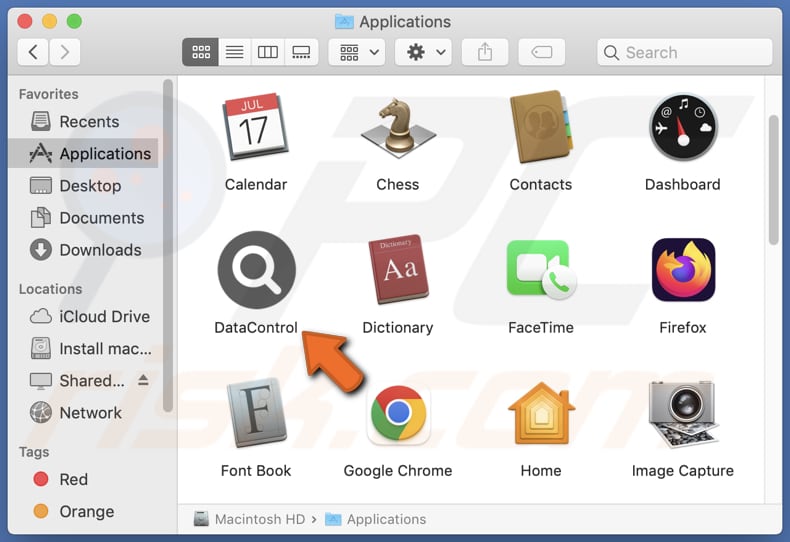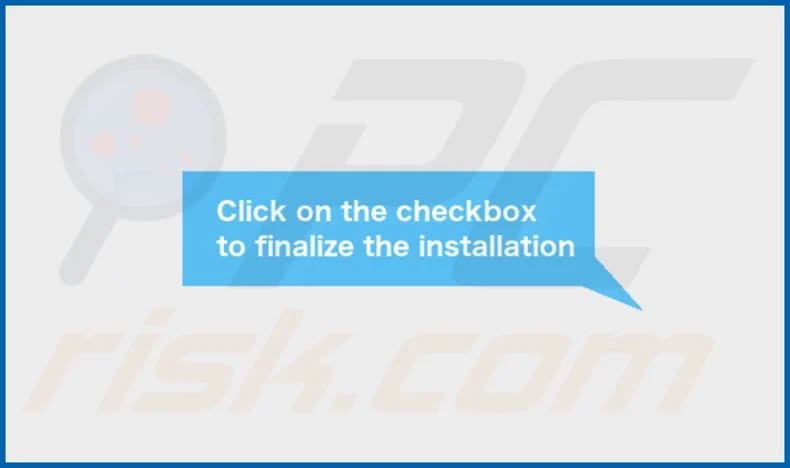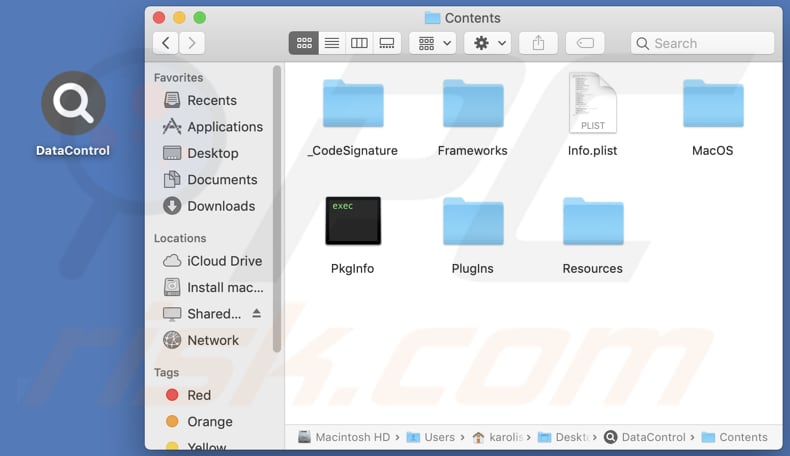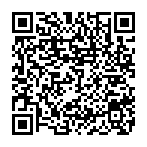How to remove DataControl from your computer
![]() Written by Tomas Meskauskas on (updated)
Written by Tomas Meskauskas on (updated)
What kind of application is DataControl?
Through our analysis of the app, we determined that DataControl falls into the category of advertising-supported applications. Its main function involves displaying intrusive advertisements to users. Besides showing annoying ads, DataControl may harvest various data. For these reasons, DataControl should be avoided.

DataControl adware in detail
DataControl exhibits aggressive and intrusive behavior. DataControl can bombard users with an excessive number of pop-ups, banners, and other ads, making it difficult to use the device effectively. Interacting with ads from DataControl can lead users to unreliable pages or even trigger unwanted downloads and installations.
Users may find themselves redirected to phishing sites that mimic legitimate platforms, aiming to steal sensitive information such as login credentials or financial details. Additionally, adware-generated ads can direct users to pages hosting malware, increasing the risk of unintentional downloads and compromising the security of the user's device.
Also, ads from DataControl can open shady pages promoting fake products and services. Users may encounter deceptive advertisements promising unrealistically low prices, bogus discounts, or fraudulent offers, ultimately leading to financial losses.
Sometimes, apps like DataControl are capable of gathering personal information, including names, surnames, telephone numbers, email addresses, etc., or even sensitive data like credit card details and passwords. The misuse of such information can lead to identity theft, unauthorized access to personal accounts, or other privacy breaches.
| Name | Ads by DataControl |
| Threat Type | Adware, Mac malware, Mac virus |
| Detection Names | Avast (MacOS:Adload-AB [Trj]), Combo Cleaner (Gen:Variant.Adware.MAC.Adload.29), ESET-NOD32 (A Variant Of OSX/Adware.Synataeb.C), Kaspersky (Not-a-virus:HEUR:AdWare.OSX.Adload.g), Full List (VirusTotal) |
| Additional Information | This application belongs to Adload malware family. |
| Symptoms | Your Mac becomes slower than normal, you see unwanted pop-up ads, you are redirected to dubious websites. |
| Distribution methods | Deceptive pop-up ads, free software installers (bundling), torrent file downloads. |
| Damage | Internet browser tracking (potential privacy issues), display of unwanted ads, redirects to dubious websites, loss of private information. |
| Malware Removal (Mac) | To eliminate possible malware infections, scan your Mac with legitimate antivirus software. Our security researchers recommend using Combo Cleaner. |
Conclusion
In conclusion, the risks associated with adware make it unwise to trust such software. Users should prioritize the installation of reputable, well-reviewed applications and exercise caution when downloading software from unfamiliar sources. Vigilance in identifying and avoiding unreliable adware is crucial for maintaining the security, privacy, and optimal functioning of one's digital devices.
Examples of advertising-supported apps are MethodOnline, PixelMegabyte, and DisplayProcess.
How did DataControl install on my computer?
Adware commonly comes bundled with free or pirated software, and users may overlook the additional components during the installation process. In these cases, adware gets installed when users finish installations without changing the provided settings (like "Advanced" or "Custom") or unticking checkboxes.
Another common method involves deceptive advertisements and pop-ups that trick users into clicking on misleading links. These ads may claim to offer system updates, security scans, or enticing freebies, but clicking on them can lead to the inadvertent download and installation of adware.
Downloads from third-party downloaders, unofficial app stores, P2P networks, and other sources of this kind can also lead to unintentional installations.
How to avoid installation of unwanted applications?
When downloading software, use trusted sources, such as official websites or reputable app stores. During installations, review each step and deselect any optional installations (unwanted apps) using the provided settings or checkboxes. Exercise caution when faced with online ads and pop-ups, especially when they are displayed on dubious pages.
Employ reliable antivirus software, keep your system and software updated, and be cautious with email attachments. If your computer is already infected with DataControl, we recommend running a scan with Combo Cleaner Antivirus for macOS to automatically eliminate this adware.
A message that appears after the installation of DataControl adware:

DataControl's installation folder:

Instant automatic Mac malware removal:
Manual threat removal might be a lengthy and complicated process that requires advanced IT skills. Combo Cleaner is a professional automatic malware removal tool that is recommended to get rid of Mac malware. Download it by clicking the button below:
▼ DOWNLOAD Combo Cleaner for Mac
By downloading any software listed on this website you agree to our Privacy Policy and Terms of Use. To use full-featured product, you have to purchase a license for Combo Cleaner. Limited seven days free trial available. Combo Cleaner is owned and operated by Rcs Lt, the parent company of PCRisk.com read more.
Quick menu:
- What is DataControl?
- STEP 1. Remove DataControl related files and folders from OSX.
- STEP 2. Remove DataControl ads from Safari.
- STEP 3. Remove DataControl adware from Google Chrome.
- STEP 4. Remove DataControl ads from Mozilla Firefox.
Video showing how to remove DataControl adware using Combo Cleaner:
DataControl adware removal:
Remove DataControl-related potentially unwanted applications from your "Applications" folder:

Click the Finder icon. In the Finder window, select "Applications". In the applications folder, look for "MPlayerX", "NicePlayer", or other suspicious applications and drag them to the Trash. After removing the potentially unwanted application(s) that cause online ads, scan your Mac for any remaining unwanted components.
Remove adware-related files and folders

Click the Finder icon, from the menu bar. Choose Go, and click Go to Folder...
 Check for adware generated files in the /Library/LaunchAgents/ folder:
Check for adware generated files in the /Library/LaunchAgents/ folder:

In the Go to Folder... bar, type: /Library/LaunchAgents/

In the "LaunchAgents" folder, look for any recently-added suspicious files and move them to the Trash. Examples of files generated by adware - "installmac.AppRemoval.plist", "myppes.download.plist", "mykotlerino.ltvbit.plist", "kuklorest.update.plist", etc. Adware commonly installs several files with the exact same string.
 Check for adware generated files in the ~/Library/Application Support/ folder:
Check for adware generated files in the ~/Library/Application Support/ folder:

In the Go to Folder... bar, type: ~/Library/Application Support/

In the "Application Support" folder, look for any recently-added suspicious folders. For example, "MplayerX" or "NicePlayer", and move these folders to the Trash.
 Check for adware generated files in the ~/Library/LaunchAgents/ folder:
Check for adware generated files in the ~/Library/LaunchAgents/ folder:

In the Go to Folder... bar, type: ~/Library/LaunchAgents/

In the "LaunchAgents" folder, look for any recently-added suspicious files and move them to the Trash. Examples of files generated by adware - "installmac.AppRemoval.plist", "myppes.download.plist", "mykotlerino.ltvbit.plist", "kuklorest.update.plist", etc. Adware commonly installs several files with the exact same string.
 Check for adware generated files in the /Library/LaunchDaemons/ folder:
Check for adware generated files in the /Library/LaunchDaemons/ folder:

In the "Go to Folder..." bar, type: /Library/LaunchDaemons/

In the "LaunchDaemons" folder, look for recently-added suspicious files. For example "com.aoudad.net-preferences.plist", "com.myppes.net-preferences.plist", "com.kuklorest.net-preferences.plist", "com.avickUpd.plist", etc., and move them to the Trash.
 Scan your Mac with Combo Cleaner:
Scan your Mac with Combo Cleaner:
If you have followed all the steps correctly, your Mac should be clean of infections. To ensure your system is not infected, run a scan with Combo Cleaner Antivirus. Download it HERE. After downloading the file, double click combocleaner.dmg installer. In the opened window, drag and drop the Combo Cleaner icon on top of the Applications icon. Now open your launchpad and click on the Combo Cleaner icon. Wait until Combo Cleaner updates its virus definition database and click the "Start Combo Scan" button.

Combo Cleaner will scan your Mac for malware infections. If the antivirus scan displays "no threats found" - this means that you can continue with the removal guide; otherwise, it's recommended to remove any found infections before continuing.

After removing files and folders generated by the adware, continue to remove rogue extensions from your Internet browsers.
Remove malicious extensions from Internet browsers
 Remove malicious Safari extensions:
Remove malicious Safari extensions:

Open the Safari browser, from the menu bar, select "Safari" and click "Preferences...".

In the preferences window, select "Extensions" and look for any recently-installed suspicious extensions. When located, click the "Uninstall" button next to it/them. Note that you can safely uninstall all extensions from your Safari browser - none are crucial for regular browser operation.
- If you continue to have problems with browser redirects and unwanted advertisements - Reset Safari.
 Remove malicious extensions from Google Chrome:
Remove malicious extensions from Google Chrome:

Click the Chrome menu icon ![]() (at the top right corner of Google Chrome), select "More Tools" and click "Extensions". Locate all recently-installed suspicious extensions, select these entries and click "Remove".
(at the top right corner of Google Chrome), select "More Tools" and click "Extensions". Locate all recently-installed suspicious extensions, select these entries and click "Remove".

- If you continue to have problems with browser redirects and unwanted advertisements - Reset Google Chrome.
 Remove malicious extensions from Mozilla Firefox:
Remove malicious extensions from Mozilla Firefox:

Click the Firefox menu ![]() (at the top right corner of the main window) and select "Add-ons and themes". Click "Extensions", in the opened window locate all recently-installed suspicious extensions, click on the three dots and then click "Remove".
(at the top right corner of the main window) and select "Add-ons and themes". Click "Extensions", in the opened window locate all recently-installed suspicious extensions, click on the three dots and then click "Remove".

- If you continue to have problems with browser redirects and unwanted advertisements - Reset Mozilla Firefox.
Frequently Asked Questions (FAQ)
What harm can adware cause?
Adware users commonly face disruptions from intrusive advertisements, leading to a compromised online browsing experience, decreased computer performance, and potential privacy issues arising from the gathering of various data.
What does adware do?
Adware is notorious for displaying annoying advertisements. Moreover, it may have the capability to hijack browsers and gather user information, adding an extra layer of concern to its disruptive nature.
How do adware developers generate revenue?
Adware developers commonly generate income by endorsing products, pages, or services, with a substantial portion of their earnings coming from involvement in affiliate programs. Through these programs, developers earn commissions for driving traffic to affiliated entities or facilitating sales for promoted products or services.
Will Combo Cleaner remove DataControl adware?
Combo Cleaner assures complete removal of installed adware-type apps. Manual removal might be insufficient, as certain files could remain concealed within the system. The tool's advanced scanning and cleaning capabilities allow it to eradicate adware thoroughly, providing users with a more effective and reliable solution to ensure their system's security.


▼ Show Discussion